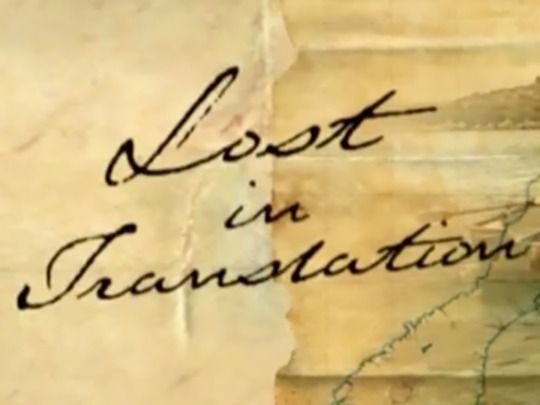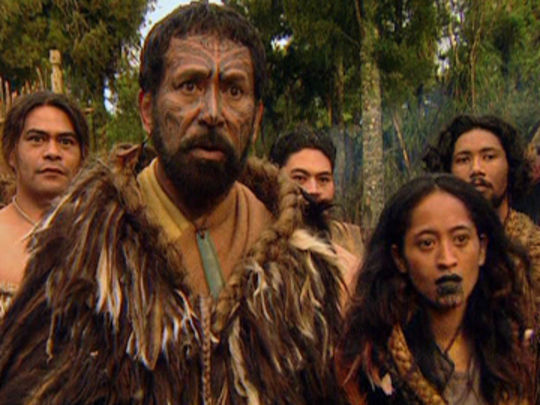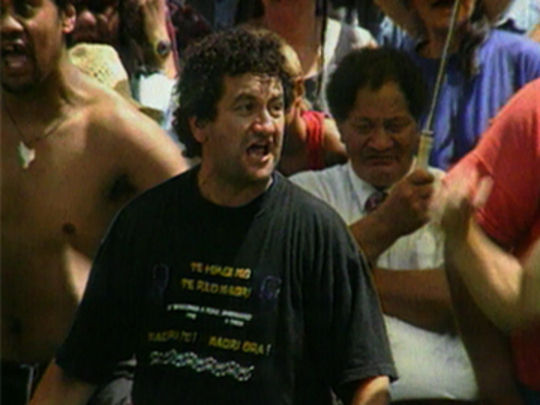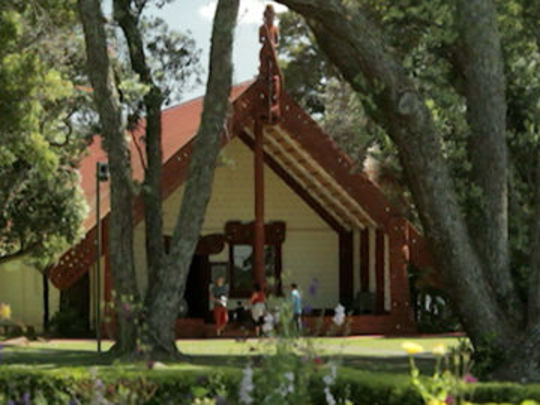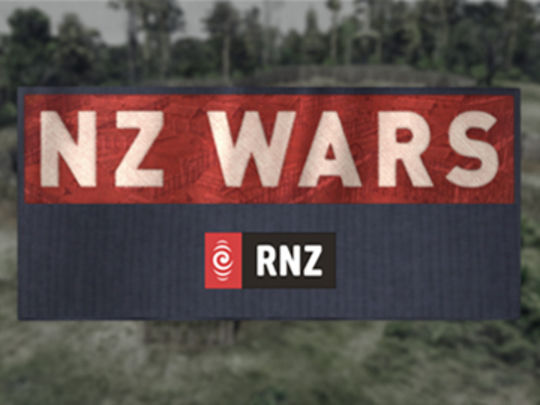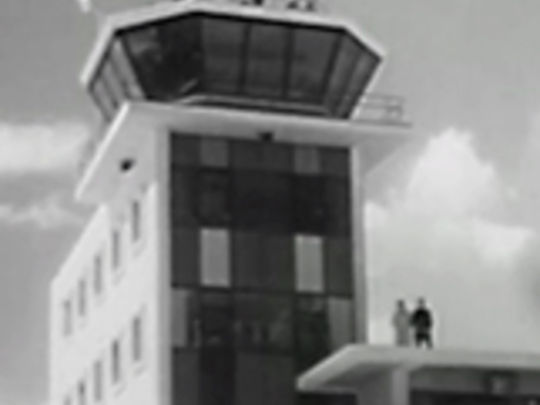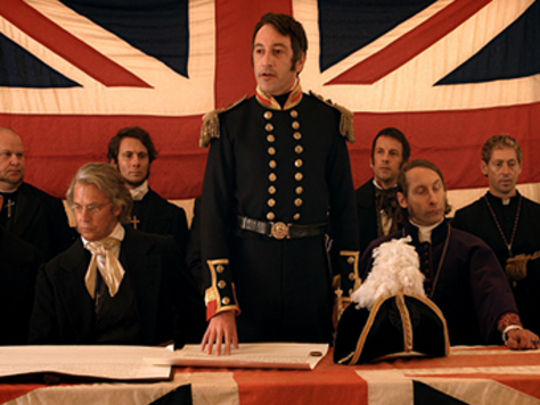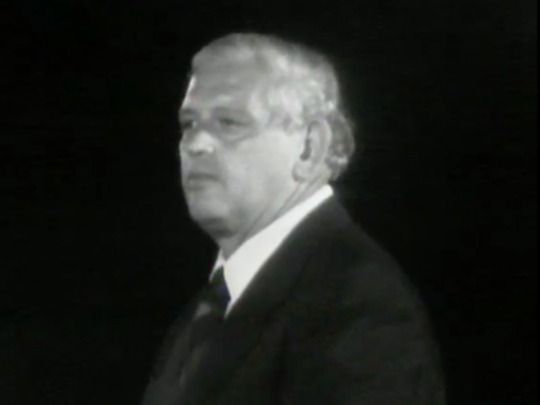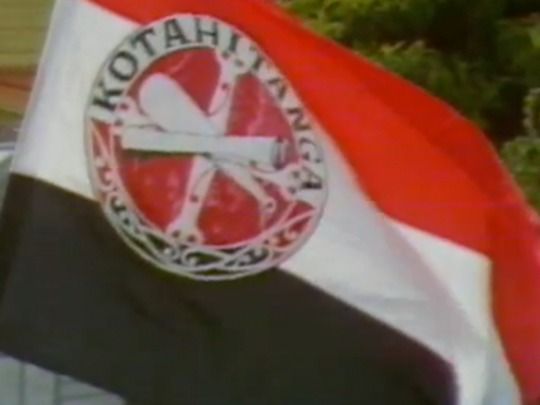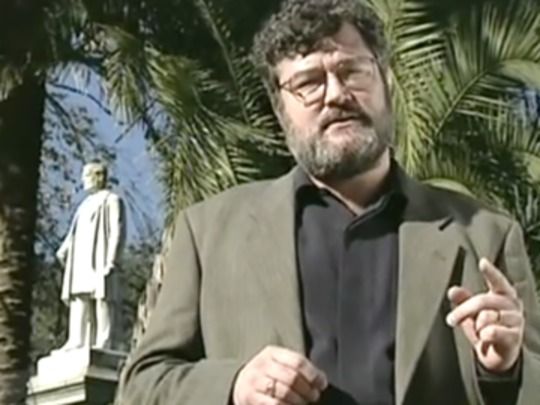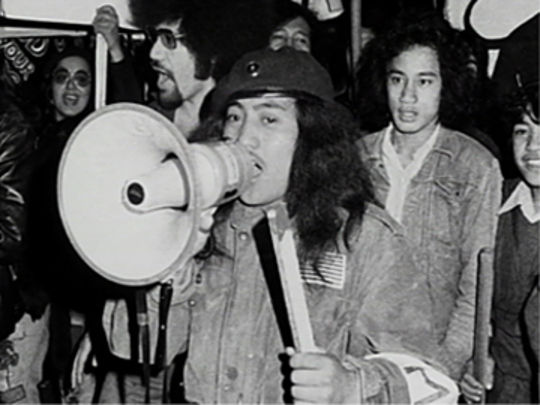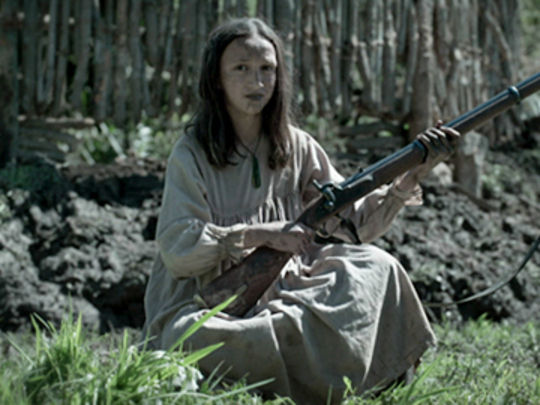The Waitangi Collection
Wandering through Waitangi
Some years ago I visited that beautiful place, Waitangi, and wandered across the lawn in front of the Treaty House to the flagpole. On the ground was a mean concrete plaque which read, ‘On this spot on the sixth day of February 1840 was signed the Treaty of Waitangi under which New Zealand became part of the British Empire’. I came back to the Treaty House seething and berated the unfortunate guard about why the plaque was all in English and why it mentioned not a thing about Māori or the articles of the treaty. I should have realised that for over 100 years for Pākehā New Zealanders the treaty meant simply, as the plaque said, the beginnings of British rule. Māori rights had no place in ideas of the treaty.
This fascinating Waitangi-related collection tells the story of how attitudes have changed for both peoples over the past half century. We begin with the only film, a Pictorial Parade from 1960. The opening is of British, New Zealand and Australian navies training in the Bay of Islands and jumps naturally to the role of the treaty in providing the protection of the British flag. Hobson’s famous comment ‘He iwi tatou. We are one people’ is the only acknowledgement that there were two parties to the treaty. Attitudes are little different from the plaque that stirred my anger.
By 1974’s New Zealand Day at Waitangi, things have changed, but only slightly. This was the first time the day was a national holiday, under the name ‘New Zealand Day’. The Queen was present. Norman Kirk speaks. He mispronounces ‘Māori’ horribly, and his emphasis is upon the founding of New Zealand and the search for nationhood and independence. He expresses pride that New Zealand was born in peace, in an act of trust and justice. Māori are present — there is extensive kapa haka and waiata; but one is struck by Howard Morrison performing ‘Oma Rapeti’ with the help of a giant moa. No sign here of dispute or contested meanings.
Such self-satisfied attitudes were not shared by most Māori in these years. We know from historical research that for over a century after 1840 Māori took the promises of the treaty seriously, and appealed repeatedly to the crown that those promises be upheld. They were motivated by a sense of loss and injustice, but also by an intensely personal relationship with their ancestors who had signed the Treaty. For Māori, history was never old documents best forgotten. It meant the actions of tipuna who were still alive in spirit. So the first Māori contribution in this collection, a 1984 Te Karere programme, concerns the journey of Tainui elders to Waitangi. The programme is in te reo — for at that stage only Māori would understand the story and the attitudes.
Six years later Waka - The Awakening Dream also highlights the intensely personal and spiritual meaning of history for Māori. The programme tells of the building of waka by iwi throughout the country to commemorate the 150th anniversary of the treaty. This was partly inspired by Te Puea’s unfinished dream for the 1940 commemoration; but in the process it also creates a much richer respect among the young carvers and paddlers of 1990 for the skills and ideas of ‘the old people’.
If Pākehā and Māori attitudes to history and the treaty were once far apart — with Pākehā, to the extent that they noticed the treaty, commemorating British rule, and Māori holding a powerful sense of obligation to their ancestors to uphold rights — things began to change.
In 1975 everyone in New Zealand was forced to take note when Whina Cooper led the Māori land march down the length of the North Island, and Matt Rata succeeded in establishing the Waitangi Tribunal. Two years later came The Governor, a path-breaking New Zealand TV drama which told the story of Governor Grey. The title image pitched a Māori face against Grey’s face; and the opening sequence showed an angry confrontation on the treaty lawn on 5 February 1840. There was not much sign of ‘good Governor Grey’. He was duplicitous towards Māori, whose concerns for their land and mana were clearly revealed.
By the eve of the sesquicentenary in 1990, attitudes were in balance. A fascinating television debate at Government House introduced by a Māori Governor-General, Sir Paul Reeves, includes an excellent historical account of the treaty signing and a calm assertion from Eddie Durie that the Treaty established a ‘bicultural’ nation. But there are also heated comments from the ‘One New Zealand Foundation’ and leading intellectuals like CK Stead that the articles of the Treaty had no relevance in modern New Zealand. Polls at the time showed that 51% of New Zealanders regarded the treaty as important, 38% did not.
Pākehā views moved further during the 1990s, driven both by the findings of the tribunal and by new historical scholarship from writers like Claudia Orange and Jamie Belich. Belich had become interested in the military skills of Māori while on a student holiday job, building trenches for The Governor. In 1998 The New Zealand Wars, presented in Belich’s charismatic hand-flapping style, established the strategic military brilliance of Māori and provided vivid evidence of the attacks on their land and mana. Ngā Tohu - Signatures, a drama from 2000, suggested the gaps between Māori and Pākehā were still there. It contrasted Pākehā aspirations for developments with Māori feelings for their traditional lands.
But attitudes were changing fast. In the 2000s Pākehā and Māori attitudes began coming together as the historical evidence mounted and Māori energy moved from the streets to the court room. This is superbly illustrated by Mike King’s Lost in Translation (2009). King, Māori by background and telling this story for Māori television, is also a comedian hugely popular among Pākehā. He admits in a brave, self-reflective opening programme that his own knowledge of te reo and of his own ancestry was minimal before the series began. Yet he manages to reach across to both cultures. To Māori he provides interviews with tangata whenua who tell about their ancestors, and he discovers for the first time what history means to him in a personal and spiritual sense. He is also conciliatory in reaching out to Pākehā. The accounts of how the treaty was negotiated and then taken round the country for signing are hugely valuable.
It would be untrue to claim that the Treaty of Waitangi evokes universal sweetness and light in Aotearoa in the 2010s, but as this set of programmes reveals, New Zealand has travelled a long way since 1960. Arguably it has been a journey towards a more mature understanding. It is surely time we replaced that plaque at Waitangi.
- Jock Phillips, ONZM, spent 13 years as New Zealand's Chief Historian before initiating Te Ara: the Encyclopedia of New Zealand, where he was editor for 12 years. His television work includes leading the team of historians behind series Frontier of Dreams. His website is here.
